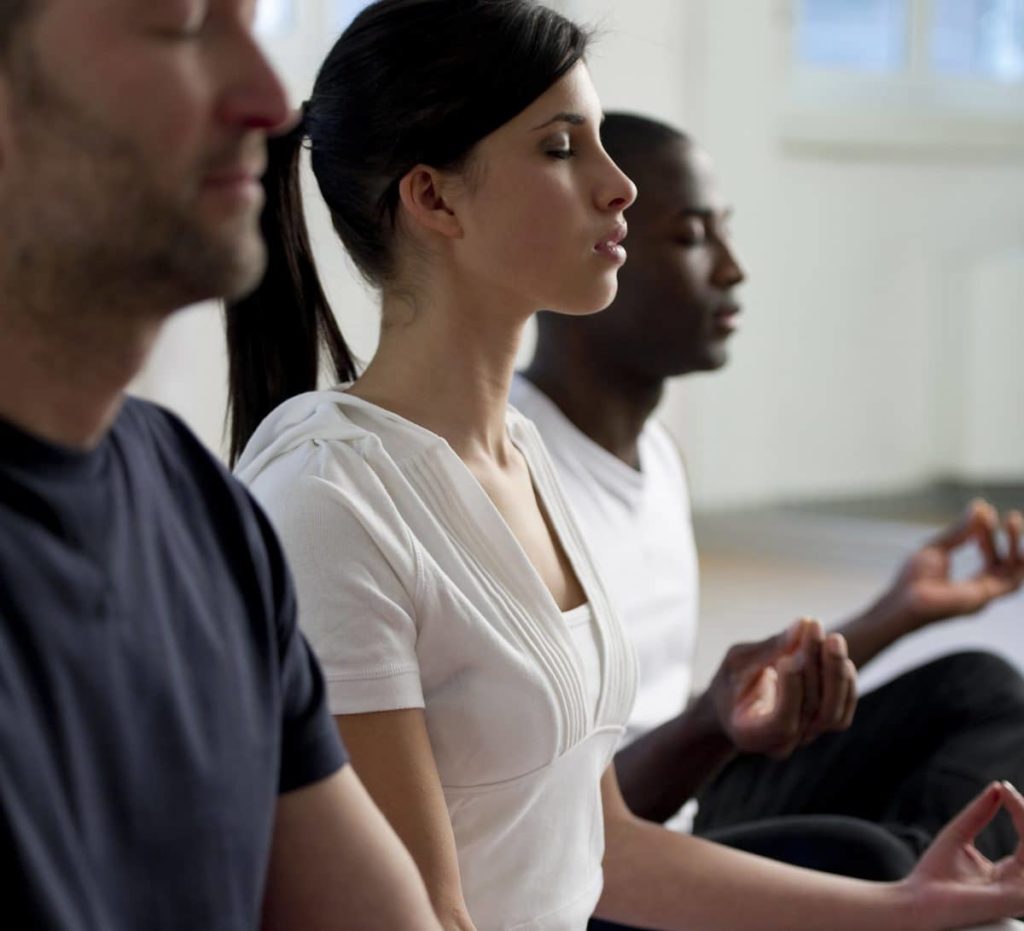Meditation Basics

What Is Meditation?
Meditation is an approach to training the mind, similar to the way fitness is an approach to training the body. Someone with no knowledge of fitness tools and methods may think her lack of strength or endurance is inevitable; she may not see that it could change with consistent training and a healthy lifestyle. Likewise, a person with an untrained mind may think the power that his thoughts and emotions wield over his life is inevitable, rather than being something that can change through meditation.
Long-term meditators come to see that thoughts and emotions are drifting by, much like clouds in the sky. And little by little, practitioners become less invested in their mindless chatter. As a result, they can live with a more open awareness of present experience. And with this awareness, they tend to react less impulsively to life’s pressures; they can respond to them with greater equanimity.
More Than Relaxation
Anyone can meditate, but misconceptions about meditation abound. Meditation is not therapy, although it can have healing effects. Meditation is not religion, although a regular practice is an adjunct to the Buddhist way of life. And meditation is not stress management, though it can help practitioners achieve relaxation.
Richard J. Davidson, PhD, director of the Laboratory for Affective Neuroscience at the University of Wisconsin at Madison, and Jon Kabat-Zinn, PhD, founder of the Center for Mindfulness in Medicine, Health Care, and Society at the University of Massachusetts Medical School, are leading researchers on the physiological effects of meditation—in particular, mindfulness meditation. They note that a mindfulness practice “is not aimed at achieving a state of clinical relaxation, but more at the cultivation of insight and understanding . . . via the cultivation of a moment-to-moment, nonjudgmental but highly discerning awareness.” Relaxation may be a byproduct, they point out, but it is not the goal. Meditation is “rather for greater awareness, self-knowledge, equanimity and self-compassion. It is hardly a trip to a luxury spa” (Davidson & Kabat-Zinn 2004).
Common Styles of Meditation
Two common styles of meditation are concentration and mindfulness meditation.
Concentration
A concentrative meditation practice involves focusing on a single point. For instance, this could entail watching the breath, repeating a single word or mantra, staring at a candle flame, listening to a repetitive gong or counting beads on a rosary. Since focusing the mind is challenging, a beginner might meditate for only a few minutes at first. In this form of meditation, the practitioner refocuses her awareness on the chosen object of attention each time she notices her mind wandering. Rather than pursuing random thoughts, she practices letting them go. Through this process, her ability to concentrate improves.
Mindfulness Meditation
In contrast, as suggested earlier, mindfulness meditation encourages the practitioner to observe wandering thoughts as they drift through the mind. The intention is not to get involved with the thoughts or to judge them—instead, it’s simply to be aware of each mental note as it arises. Through this process, practitioners see how thoughts and feelings tend to move in particular patterns. Over time, they become more familiar with the impermanence of emotional states and with the human tendency to quickly judge experience as “good” or “bad” (“pleasant” or “unpleasant”). With practice, an inner balance develops.
This balance comes at a price, however. As Davidson and Kabat-Zinn emphasize, “A good deal of the time, the practice of mindfulness may mean being with and observing states of mind and body that are extremely painful . . . , including fear, loneliness, anger, bodily discomfort, impatience, boredom and the like. These are to be experienced as best as one can with the same nonjudgmental attitude as pleasant or neutral experiences” (Davidson & Kabat-Zinn 2004).
In some schools of meditation, students practice a combination of concentration and mindfulness. Many disciplines also call for stillness—to a greater or lesser degree, depending on the teacher.
Other Forms of Meditation
There are various other meditation styles, as well. For example, a daily practice among Buddhist monks focuses directly on the cultivation of compassion. This involves envisioning negative events and recasting them in a positive light by transforming them through compassion. In addition, there are moving meditations, such as tai chi, chi kung and meditation walks.
Cultivating Inner Peace and Equanimity
Inner peace and balance are as important to well-being and health as exercise and nutrition. Importantly, meditation offers a path to greater equanimity—and, in this way, it helps us to benefit the world.
Updated Sept. 23, 2021.
This exercise is an excellent introduction to meditation techniques.
1. Sit or lie comfortably.
2. Close your eyes.
3. Make no effort to control the breath; simply breathe naturally.
4. Focus your attention on the breath and on how the body moves with each inhalation and exhalation. Notice the movement of your body as you breathe. Observe your chest, shoulders, rib cage and belly. Make no effort to control your breath; simply focus your attention. If your mind wanders, simply return your focus back to your breath. Maintain this practice for 2–3 minutes to start, and then try it for longer periods.
Shirley Eichenberger-Archer, JD, MA
Shirley Eichenberger-Archer, JD, MA, is an internationally acknowledged integrative health and mindfulness specialist, best-selling author of 16 fitness and wellness books translated into multiple languages and sold worldwide, award-winning health journalist, contributing editor to Fitness Journal, media spokesperson, and IDEA's 2008 Fitness Instructor of the Year. She's a 25-year industry veteran and former health and fitness educator at the Stanford Prevention Research Center, who has served on multiple industry committees and co-authored trade books and manuals for ACE, ACSM and YMCA of the USA. She has appeared on TV worldwide and was a featured trainer on America's Next Top Model.






